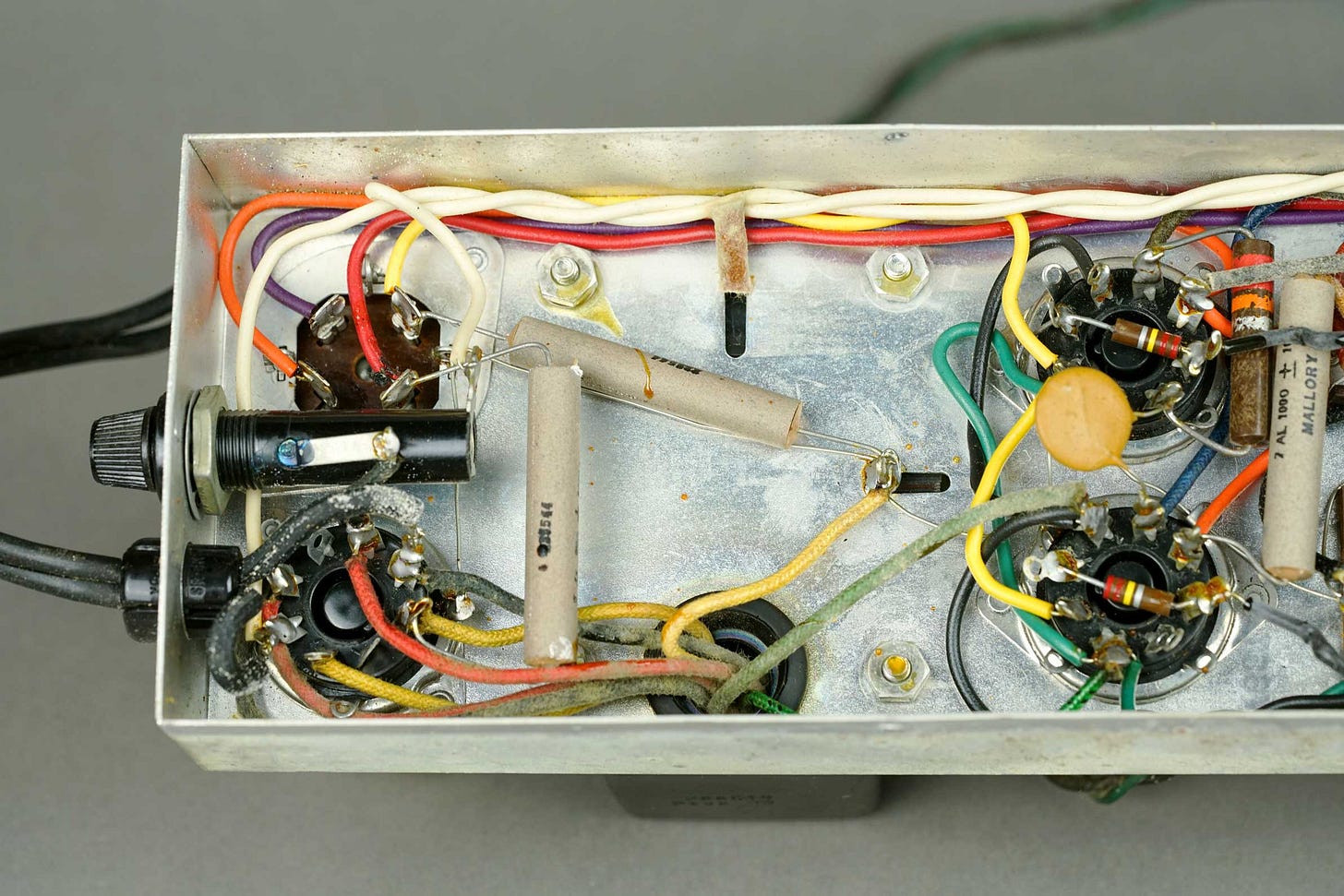
Welcome to the continuation of How a Tube Amp Works!
The electricity in your wall is pretty utilitarian. It’s an AC current that is intended to power all the random appliances we use from day to day: lamps, toasters, etc. The electric company isn’t concerned about powering sensitive audio equipment, because most people don’t use that sort of thing. So, the AC mains electricity isn’t like a perfect sine wave, clean and predicable as a dial tone. It’s dirty and buzzy.
Additionally, we can’t run an amplifier on AC power. It needs a DC power supply. So, once the mains electricity passes through the power transformer, we need to convert (rectify) the AC current to DC current. Then, we need to remove the resulting ripple and any additional noise. This is the job of the power supply.
THE POWER TRANSFORMER
Before we rectify and filter anything, we must ask: what are the power requirements of the amplifier? This depends primarily on the power tubes that we are using. A 12AX7 needs around 300 V and draws a modest amount of current, around 1 or 2 mA. On the other hand, power tubes draw a lot more current—usually 60 or 80 mA per tube. The plate voltage requirements of power tubes vary, but many tubes are fine receiving around 400 V or so.
Basically, you need a power transformer that can handle the current needs of everything in the amplifier, while also providing enough voltage so that the input preamp tube will have a reasonable amount for its plate. This is an oversimplification, but it covers the fundamental requirements of most amps.
As we’ll see in a minute, every node on the power supply drops some amount of voltage, so we have to start with relatively a lot if we want to provide hundreds of volts for the tubes at the end of the line. This is a balancing act because power tubes also have maximum plate voltage ratings. For instance, the 6V6 historically allows a maximum of 350 V on the plate. This is often ignored by designers, including Fender, but if you can’t stay in the ballpark it’s probably best to revise the circuit or use a different tube (most of which have higher maximum plate voltages).


